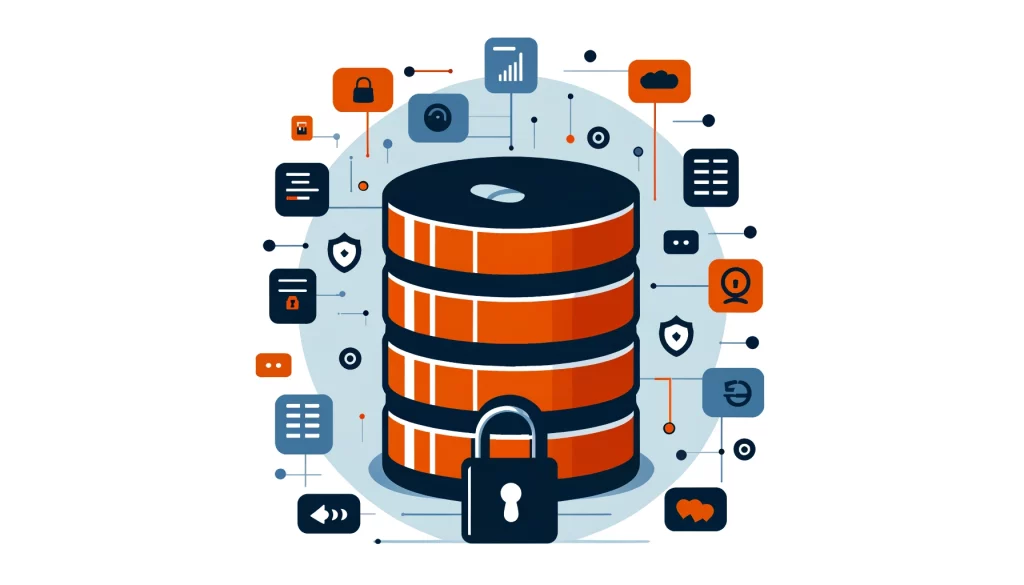
Column Level Security in SQL Server

In today’s data-driven world, ensuring the security of sensitive information is a top priority for organizations. SQL Server is a common database system that has a useful feature called Column Level Security (CLS). This feature helps protect certain columns in database tables. By using CLS, you can control who can see important information, adding an extra level of security.
What is Column Level Security?
Column Level Security in SQL Server allows you to control access to specific columns in a database table. This feature determines which users can view and use certain columns. It helps restrict access to sensitive information within the database.
It allows you to define which users or roles can view or modify the data in a particular column. CLS provides fine-grained access control, ensuring that only authorized individuals can access sensitive information.
Benefits of Column Level Security
Implementing Column Level Security in your SQL Server database offers several key benefits:
Granular Access Control
With CLS, you can restrict access to specific columns rather than the entire table. You can control which information stays safe and which information is accessible in the same table. This allows you to prioritize important data while still allowing access to less important data.
You can allow a user to view a customer’s name and email address. However, you can restrict their access to the customer’s credit card details.
Centralized Security Management
The database directly manages CLS, eliminating the need for separate application-level security controls. A centralized approach consistently applies access restrictions to all applications that interact with the database. The system immediately enforces any changes made to the CLS configuration, reducing the risk of security vulnerabilities.
Simplified Database Queries
Column Level Security lets users access database tables directly. They don’t need to use complicated views or additional application logic to hide restricted columns. This simplifies the development process and improves query performance, as the database engine handles the access control internally.
Implementing Column Level Security
SQL Server provides three primary methods for implementing Column Level Security:
Column Level Permissions Column Level Permissions allow you to grant or deny access to specific columns using SQL statements. Here’s an example of granting SELECT permission on specific columns to a user:
GRANT SELECT ON mydata.table (column1, column2) TO exampleuser; GO
Similarly, you can deny access to specific columns using the DENY statement:
DENY SELECT ON mydata.table (column3) TO exampleuser; GO
This SQL statement denies the exampleuser the permission to select data from column3 in the mydata.table table.
Column Level Encryption Column Level Encryption involves encrypting the data within specific columns using symmetric keys. This method provides an additional layer of security by encrypting the sensitive data at rest. To implement Column Level Encryption, follow these steps:
Create a database master key to encrypt the symmetric key:
CREATE MASTER KEY ENCRYPTION BY PASSWORD = 'mY-PssWrd'; GO
Create a certificate to secure the symmetric key:
CREATE CERTIFICATE MyCertificate WITH SUBJECT = 'Column Encryption'; GO
Create a symmetric key and specify the encryption algorithm:
CREATE SYMMETRIC KEY MySymmetricKey WITH ALGORITHM = AES_256 ENCRYPTION BY CERTIFICATE MyCertificate; GO
Add a binary column to your table to store the encrypted data:
ALTER TABLE SensitiveTable ADD EncryptedColumn varbinary(max);
Encrypt the sensitive column data using the symmetric key:
OPEN SYMMETRIC KEY MySymmetricKey DECRYPTION BY CERTIFICATE MyCertificate; UPDATE SensitiveTable SET [EncryptedColumn] = EncryptByKey(Key_GUID('MySymmetricKey'), SensitiveColumn); GOThis SQL statement opens the MySymmetricKey symmetric key for decryption using the MyCertificate certificate. It then updates the SensitiveTable table, encrypting the SensitiveColumn using the MySymmetricKey and storing the encrypted data in the EncryptedColumn.
Drop the original unencrypted column to prevent exposing the sensitive data:
ALTER TABLE SensitiveTable DROP COLUMN SensitiveColumn;
Dynamic Data Masking (DDM) is a feature that hides sensitive data in query results without changing the original data. DDM applies to specific columns and enforces the masking rules whenever querying the data. To apply a data mask on a column, use the ALTER TABLE statement:
ALTER TABLE Data.Membership ALTER COLUMN UserPreference ADD MASKED WITH (FUNCTION = 'partial(2,"xxxx",0)');
This SQL statement applies a data mask to the UserPreference column in the Data.Membership table. The partial masking function uses the first two characters of the data and replaces the rest with “xxxx”.
Real-World Examples
Let’s explore a few real-world scenarios where Column Level Security can be beneficial:
- Healthcare Industry In the healthcare industry, protecting patient privacy is critical. CLS lets you control who can see private medical information such as diagnoses and treatment details. Authorized staff can still access other important patient data.
- Financial Institutions Financial institutions handle highly sensitive data, including account numbers, credit card information, and transaction history. Only authorized employees such as account managers or fraud investigators can access specific columns containing sensitive financial information through CLS.
- E-commerce Websites E-commerce websites store customer information, including personal details and payment information. CLS can protect sensitive columns, such as credit card numbers or addresses. It allows customer service reps to access other important information for order processing and customer support.
Best Practices for Implementing Column Level Security
When implementing Column Level Security in your SQL Server database, consider the following best practices:
- Identify Sensitive Columns
Conduct a thorough examination of your database schema to identify columns that contain sensitive information. Classify the data based on its sensitivity level and determine which columns require additional protection. - Define Access Policies
Establish clear access policies that define which users or roles should have access to specific columns. Consider the principle of least privilege, granting access only to those who require it to perform their job functions. - Regularly Review and Update
Regularly review and update your Column Level Security configuration to ensure it aligns with changing business requirements and security policies. As user roles and responsibilities evolve, adjust the access controls accordingly. - To enhance protection, combine Column Level Security with database permissions, data encryption, and row-level security. A multi-layered security approach ensures comprehensive protection of your sensitive data.
Conclusion
SQL Server Column Level Security is a powerful tool for protecting sensitive data at a granular level. By implementing CLS, you can ensure that only authorized users can access specific columns within your database tables. CLS offers options like column level permissions, encryption, and data masking to protect your sensitive information.
Remember, data security is an ongoing process. Regularly review and update your Column Level Security configuration to maintain a robust security posture. To improve the security of your important data in SQL Server, use CLS along with other security measures.
Following best practices is important. This will greatly improve the protection of your data.
Come to our demo session to see how DataSunrise can protect your data and enhance your security strategy. You’ll see firsthand how our tools work to keep your sensitive information safe.
